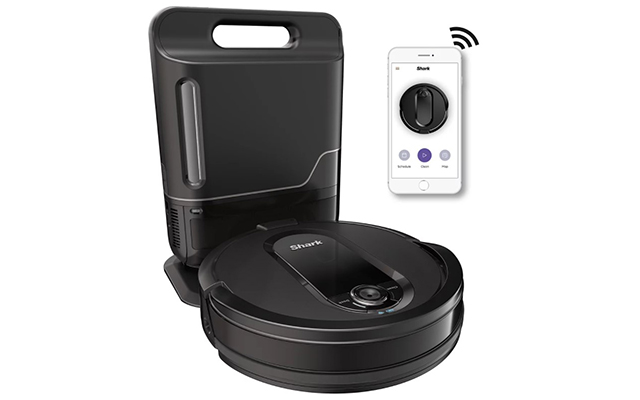Frugal Living: How do you pay off $50k in debt? (Part 2)
In this week’s episode of Frugal Living Jim continues his chat with Tiffany Grant, a financial coach and blogger at Money Talk with Tiff. Tune in to the episode to hear some of her tips for motivating yourself to pay off debt. You can listen to Frugal Living with Jim Markus on Apple Podcasts, Spotify, Amazon, Anchor.fm, iHeartRadio, or anywhere you go to find podcasts.

In the second part of this interview, Tiffany covers some of her favorite tips for tackling debt. Whether you break it down into small, easy-to-reach goals or set yourself up for monthly challenges, setting personal finance goals is a great way to attack any amount of debt.
This is part one of a two-part episode. Check out the episode from Tuesday, April 12, 2022, for the first installment of Jim’s chat with Tiffany: Frugal Living: How do you pay off $50k in debt? (Part 1)
Find Your Passion Project
Another motivating tip from Tiffany is to make sure you have a passion project. Find something that brings you joy. Sometimes that passion can turn into an additional income stream and in some cases, like Tiffany’s, can become your sole source of income.
Financial Literacy Month
In honor of Financial Literacy Month, podcast episodes of Frugal Living in April focus specifically on money. What do you need to know to be considered financially literate? Opinions differ. The most important parts are: Understanding how to budget and how to harness the power of compound interest. You also might want to know what’s the best way to pay off debt.
Read a Transcript from This Episode
Jim (00:02):
This is Frugal Living. This is part two of my two-part conversation with Tiffany Grant. If you haven’t already heard part one, check it out wherever you found this episode. Tiffany talks about paying off debt, saving money, and a personal favorite, finding deals. <music> We haven’t really talked to someone who’s been an extreme couponer in the past. It’s frugal in a very real sense. This isn’t theoretical. This is you going to the store. What are you going to save? Can you tell me a little bit about that journey? What’s the best deal you’ve gotten? What advice do you have for people who are new to this?
Tiffany (00:51):
So now I don’t do, like, the whole getting the newspaper, the Sunday paper ’cause the Sunday paper is expensive now. It’s like $3 or something like that here locally. So I’m like, “Eh.” You know, is it worth it anymore? But I know back then it used to be, like, a dollar for the Sunday paper. So I would go ahead and get my dollar. Go get it, and I had a whole system. One website that I love is CouponMom.com because she keeps a whole entire database of all of the different coupon magazine things. She keeps a whole database. So you can go on there and search for whatever it is you wanna buy. You can see exactly what coupon book it’s in and all that good stuff. So I used to use her website every time I went to the store. And I had, like, a whole binder with all of the booklets. You know, it was, like, a whole system. It was time consuming, but it was very much worth the time spent because, like I said, for instance, I remember going into the store and I would have a whole cart full. Now, inflation wasn’t where it was now. But let’s say that cart was probably, like, two to three hundred dollars, you know, if I was to pay full price. By the time I was able to use the sales, ’cause even to this day, for instance, I don’t buy anything unless it’s on sale. I’m allergic to full-price anything. Even with my kids, like, I have trained them up over the years to where if they go to the store with me, if it’s not on sale, they know they’re not gonna get it. So they don’t even ask. So what they do now is they’ll say, “Oh mom, it’s on sale. Can we get it?” And usually if it’s on sale, then the answer’s yes as long as it’s within budget. Now they’ve gotten to the point where they don’t even ask me to buy anything that’s not on sale. So between using the sales, the coupons, and the particular store that I shop at, they do double coupons, which they double up to 99 cent. But then sometimes they would do super double coupons, which means that they would double up to a dollar 99. So between using all of those strategies, I took that cart and only paid like $20. And the lady that was checking me out, ’cause I remember it vividly, she was like, “How did you do this?” Because, mind you, I’m like 16, 17 at the time. And so she’s looking at me like, “Are you teaching classes?” But I will also say with that process, you wanna make sure that you’re only buying stuff that you’re actually gonna use. So, for instance, I wasn’t one of those extreme couponers where I’m just buying up all the Tides or buying up all the, you know, X, Y, Z. I made sure that it was stuff that I was actually going to use. And then that’s how I was able to make sure that it wasn’t wasteful. You know, ’cause sometimes I look at, you know, when they used to have the show on. I’m like, “Are you really gonna eat all those boxes of cereal? No.” So if your goal is not to donate or, you know, whatever the case may be, then just make sure that you’re only buying stuff that you’re going to use to cut down. ‘Cause I’ve also learned, too, that the less cluttered your house is the better it is for you to think, for you to, you know, just declutter your life, to declutter your thoughts, to declutter your relationships. Like, it’s all attached. So I have been on that journey as well of just decluttering and it has been very, very helpful. But to go back to that, when it comes to couponing, like, even now I’d use a lot of electronic coupons. So before I buy anything, I’m searching for coupons. So I’m always trying to find a deal because if something is full price, nine times outta ten, I’m probably not gonna get it. And that goes for business-related stuff too. Like, I’ve gotten so many good deals on software, on equipment, even, like, my podcasting equip– everything. Like, I just do not pay full price.
Jim (04:36):
I love that. Everyone that I work with is the same way. Brad’s Deals is a deal website. And so the editorial staff is just deal hunters. Like, people that are just like you. Exactly what you’re saying where it’s, like, if it’s full price, I don’t even see it anymore. It’s, okay, well I’ve, I’ve logged it in my head to note, “Okay, well, you’re charging $47 for a couple of pillows. I can get it for way, way less.”
Tiffany (04:58):
Usually all it takes is a quick Google search. Use Brad’s Deals, for instance. Like, you know, you can always find a deal on something. So, and even if I can’t, like, let’s say on a particular website, maybe I’ll search for that same product on another website where I can get a deal.
Jim (05:12):
Totally. If you’re not brand agnostic, you know, like, if you really like Michael Kors, like, you know, you wanna go with one specific brand that you really love, you don’t have to be store loyal, you know? Like, don’t fall in love with Walmart or Amazon. Like, don’t do all your shopping in one place. That’s great for Walmart or Amazon, but it’s not great for you.
Tiffany (05:33):
I will tell you, like, when I used to do this, do this, I would go to, like, maybe two or three different grocery stores depending on what I was trying to get and if it was worth the extra drive. But a lot of the times it was. Like, I would get some free stuff ’cause that’s another thing on CouponMom.com. She also says what you can get for free. And so I’m like, “Okay, well I can use this coupon. Let me go ahead and get this free thing. Try it out. Might be something I like, you know, might not, but I’m getting it for free. So why not?”
Jim (06:01):
I talked recently with a financial advisor on the podcast and one of the topics we discussed was free isn’t usually free. Like, free comes with something, right? There’s a reason it’s free. And so when you’re dealing with, like, an online service like Mint.com, free means you’re giving away a little bit of your information to advertisers. You’re saying, “Okay, you can know I’m looking for mortgages or comparing credit cards and you can share that with advertisers.” And they’ll pay you for that information. So it’s free for me, but I’m giving you a little something. And at stores it’s kind of the same way. Like, you don’t have a built-in loyalty base yet? Like, no one’s ever heard of your product? Yeah, I’ll try it. And if it’s good enough, then, you know, you’ve got a person now that will buy your stuff.
Tiffany (06:41):
And I will also say, too, another thing that I kind of still use too, is, like, the apps that give you cash back for your groceries and your gas and all that stuff. So maybe I’ll drop a few. So, Checkout 51, Ibotta. Usually with these apps is all you have to do is take a picture of your receipt, upload it. Now, granted, going back to what they’re getting, they’re getting, “Okay, well this person bought this long list of stuff.” They can see what people are buying, that type of thing. But what you’re getting is money back. And so I felt that it was worth it ’cause I’m like, “I don’t care if you know what I’m buying. You know, put it, aggregate it with the rest of everybody else’s data. Whatever.” But I’ve made probably over, hm, I would say, like, maybe $200 or so using those apps. And for me, it’s just a quick win. ‘Cause with the gas one, for instance, while I’m at the pump, snap it, boop, upload it, and I’m done. So I love, like I said, all types of deals. Um, but going back to your original question, this is all how I paid off, you know, all of this money. It’s just being allergic to full price, making sure I had a budget, and getting cash back whenever possible. And then doing side hustles.
Jim (07:54):
I love that. I wanna dive into the side hustles too because paying back a big lump sum, I think that’s something a lot of people, myself included, can really identify with. The idea of, like, you got a student loan. You’re entering the working world with 10 grand in your case, 23 grand, 24 grand in my case, you know, 50, 60, 80 grand in a lot of other cases. That’s hanging over your head. Besides living frugally, finding the best deal, and, obviously, negotiating, you know, a lower payment whenever you can, what’s the next big step?
Tiffany (08:24):
So with my story, for instance, like I said, I had picked up another job. I was also, I went back to school to get my MBA. So that was adding debt. But I was like, “You know what? This is any means necessary. I have to make this goal.” And so I wanna make this one point. You have have to have some type of intrinsic motivation. Don’t let it all be extrinsic. Don’t let it all be about the money or you know, all of this stuff. For me intrinsically, I was like, “I have to do this. Like, this is my thing, this is what–” I’m like, okay, I can wake up in the morning, and I’m like, “Ooh, I gotta see how I can, you know, pay off more debt.” And also when you’re looking at a big mountain, right? So let’s say, you know, 30, 20, it doesn’t matter. Mountains are relative, right? So, you know, somebody might be looking like, “Ooh, 2000, that’s a big mountain.” And it is, maybe, for that person. So I’m not gonna put a number on it. But when you’re looking at a big mountain of debt, what has helped me tremendously is breaking it down and doing either, like, the snowball or the avalanche method or a combination of both. A lot of times I do a combination of both for myself and my clients. And it’s like when you start paying off, like, say we start with the snowball, we pay off the smallest one. You get that paid in full letter. It’s like, “I did it!” And it’s like it just gives you this, like, momentum. And in my case, for instance, you know, I love a good challenge like I said. So I was like, “Okay, I was able to pay this one in two months. Let me try this one in three.” I started making competitions with myself and as I was making those competitions, it was making me pay off the debt faster and faster and faster. And so I had some good momentum going on. And it was all fueled by that intrinsic motivation, getting those paid in full letters. That’s why I’m like, “Don’t be afraid of the small wins.” If you have, like, a little, let’s say, $50 credit card something, go ahead and pay it. And just see how it feels because a lot of times money is psychological and it’s emotional. And so when you start tapping into how you feel when certain financial things happen, it kind of gives you more motivation to do things, you know, whether it’s a little faster or being more aggressive. Or even if, let’s say debt payoff is not something that you’re like, “Oh, I gotta do this.” Maybe you can start saying, okay, maybe saving up for travel is one of your, “Ooh, I gotta do this.” Once you start seeing how much you can accumulate in how much time, and you can start playing a game with that too. So that’s, kind of, like, my strategies when it comes to whatever financial goal I have. It’s like, “Okay, how can I make this competitive?” Even when I was driving Uber and Lyft, right? I would compete with myself. I would play a game where I would go home. Like, I’m like, “Okay, if I get a request on my way home, I have to take it. But if I get into my driveway, then I’ll go ahead and turn it off.” And so doing that, you know, just, I would drop somebody off. I’m like, “Okay, let me try to get home. Oh, got another one.” And so I would play a game with that too. So that was a playing game with making money. And I even do that in my business currently with Money Talk. Like, I will say, “Okay, I know that this is my number to survive for both, you know, my personal and my business expenses. I know if I break this down that, you know, can include X amount of clients. Let me see if I can get X amount of clients, or maybe I’ll add one more for the following month. You know? So that is, like, kinda, how I run my life. I’m very competitive with myself. But it helps because it’s a good strategy to motivate yourself ’cause a lot of times people look for external motivation. You know, maybe they’re like, “Oh, I need an accountability partner,” which there’s nothing wrong with that ’cause that is what I am to a lot of people. You know, sometimes you’re like, “Oh, I need an accountability partner,” or “I need this person to tell me X, Y, Z,” or “I need to do this blah, blah, blah.” And you’re putting too much power into other people’s hands. When you can start doing some intrinsic stuff, you can start doing some, okay, doing the competitions with yourself, you know, that type of thing. So that way you’re not depending too much on other people to determine your success, if that makes sense. <music>
Jim (12:40):
This episode, as always, was brought to you by Brad’s Deals. There’s a community of people here scouring the web for the best deals on everything. The site is B R A D S D E A L S.com. One trick for deal hunters: You can sign up for the Brad’s Deals newsletter. That way, you’ll have a better chance of snagging something stellar before it sells out. Thanks for listening. <music> You were a businessperson from birth. Like, you were a young business person and you talk about ways to motivate yourself. You’re going back to some core truth of you. You like making money. You like figuring out ways to make money. Why not embrace that? You know, go back, get that MBA. Sure, high cost. Like, high ticket price for entry but huge return when that’s, you know, your core being.
Tiffany (13:35):
And that’s one thing also that I talk about a lot with my clients on the podcast–all types of stuff–is making sure you know what targets you have. Like, a lot of people get so stuck in, you know, going to work, coming home, taking care of the kids, getting ’em into bed, blah, blah, blah, watching Netflix, whatever. But it’s like everybody’s on autopilot and they’re not tapping into what they truly want to be doing with their life. And so that I feel has been a key in my life as well. You know, I’ve always been good with money. I’ve always liked writing ’cause Money Talk with Tiff started as a blog. So I’m like, “Oh, let me just get some information out there.” And I’m just typing away. But that was, like, my passion project when I was working in corporate America. And so I always tell people make sure you have a passion project. You know, something that brings you joy. Even if you do decide to stay at a nine-to-five, having that outlet, having that getaway will help you be a better employee. I’ve seen it, you know, in action ’cause my previous career was HR. And so I’ve seen it in action. Now if you decide, “Okay, I realize that this nine-to-five is not for me,” that can also be your segue into doing, you know, what you love to do for the rest of your life. Like, talking about money, it’s, like, I don’t care if I get paid to do this. This is what I love to do. Now, granted, I do have bills. So that’s the only reason why I care. But this is something that–Like, let’s say I won the lottery and I didn’t have to worry about bills or anything else, I would still get up and do this every single day ’cause this is what brings me joy. And so that’s what I encourage people to do is to find that one thing that brings you joy. And a lot of times, if you look back into your life, you can, kinda, see a common theme, you know? So don’t be afraid to tap into that common theme, whatever that thing is. I just had this conversation with one of my friends ’cause she has a business now cleaning houses. And she was, like, when she was younger she used to always like to clean. Me on the other hand, I’m like, “I hate cleaning.” If you look back at what you were doing when you were younger, that’s usually an indication on what you would be good at now. I do believe that we were all put here for a mission, for a purpose. You know, there’s something that we’re supposed to be doing. And a lot of times, if we don’t do that thing, we get in a lot of trouble. And so if you find out what that thing is and you start doing it, you will be surprised at how easy it is, how easy life is. Like, thankfully, ever since I went full time with Money Talk with Tiff, I’ve never had to worry about a bill. And for me it’s amazing because I’m just like, “What? Like, how does this even happen?” Sometimes it was just like miracle money just dropping into my account. But that also tells me that this is what I’m supposed to be doing with my life. And anytime I get off track, like, I start doing something else or whatever, I always come back to this. And when I’m off track, I start struggling. And I’m like, “Well, when I’m doing Money Talk, you know, it’s easy.” So that’s, kind of, some clues on how you can find what that thing is and know when you have finally stepped into it.
Jim (16:43):
Incredible advice. One of the things I take from that is as you get older it can sometimes be more difficult in the how do I gain financial independence. Like that, that conversation gets harder the closer to retirement age you get. But based on what you’re saying, and I completely agree, with age also comes that huge benefit of you’ve got longer to look back on to say, “What is it that I see myself doing all the time? What patterns do I recognize in my life?” If you’re 15, if you’re 20, if you’re 25, you’re gonna have a lot fewer of those patterns than if you’re 45 or 50 or 60. And as you get older and you start looking back at your life and seeing, “I keep going back to starting businesses,” or “I keep going back to talking to my friends about money,” or “I go, keep going back to always having clean houses and badgering my friends to clean their houses.” Like, that’s a great clue. I love that idea. And I, I don’t think I’ve heard it phrased that way before. So thank you for sharing that.
Tiffany (17:38):
Oh yeah, no problem. And you know, going back to a previous point, you can always monetize whatever it is. For instance, I have a stylist right now and she’s a frugal shopper. So she only shops thrift stuff. So all my stuff comes from the thrift store. But personally I hate going through all of those clothes at the thrift store. She loves it and she has an eye for it. And so she has created a business to where she shops for people at thrift store. So the prices are still low. Like, I think this shirt was maybe, like, $5 or something like that. So the prices are still low. She’s able to get the deals and then she turns around and resells them. And so it’s, like, it doesn’t matter what you love to do. There is someone out there willing to pay you for whatever that thing is. So keep that in mind as well. ‘Cause a lot of times people hold themselves back by saying, “Oh, nobody’ll pay me for this.” Or, “Nobody will…” You know, “This is not a thing,” or blah, blah, blah. I can guarantee you if you Google whatever that thing is, there’s somebody out there that’s selling it. Get that out your head. Like for instance, my mom, her passion is doing genealogy research. Right? So she’s one of those people that loves being in ancestry. She’s done hundreds of trees for different people. One of our family trees has, like, 6,000 people on it now. She has found that that is her passion. And so now she has created a business helping people find out their lineage. So, like I said, it doesn’t matter what it is. There is someone out there doing it. Don’t let that hold you back.
Jim (19:05):
I feel charged up from this conversation. Like I’m, I’m inspired to go out and start up businesses. For people who want to find you and continue this conversation every day for the rest of their lives, where can they find more Tiffany Grant?
Tiffany (19:18):
You can find me at MoneyTalkwithT.com. You can find my podcast Money Talk with Tiff. And then on social media everywhere it’s @MoneyTalkwithT. And on Facebook, ’cause they’re a little different, it’s Money Talk with Tiff. So you can find me everywhere.
Jim (19:32):
Awesome. And we’ll also have links to you on our blog post that goes up. Sometimes we’re a little bit delayed with putting the blog post up as to when the episode goes out, but trying to shorten that up a bit. So you’ll be there. And you can find Tiffany and all of her social media presences on our blog as well. Again, thank you so much for making the time to talk today. It was a pleasure having you.
Tiffany (19:53):
Aw, thank you so much. And it was a pleasure for me as well. I believe that the way out of poverty is ideas. So the more ideas we can spread, the better we’ll be as a community. <music>
Jim (20:09):
Thanks to Tiffany Grant for the great conversation. This episode was edited by Genny Blauvelt, and I’m Jim Markus. <music>
More About This Episode and Frugal Living
To hear more from Tiffany Grant, check out this week’s episode of Frugal Living or the Money Talk with Tiff Podcast and follow Tiff on Facebook.
To hear more episodes about how to pay off debt, check out the latest episode of Frugal Living. Frugal Living is a podcast for smart consumers. How do you spend less and get more? The show, sponsored by Brad’s Deals, features interviews, stories, tips, and tricks. Jim Markus hosts season four, out now.
The post Frugal Living: How do you pay off $50k in debt? (Part 2) appeared first on The Brad's Deals Blog.

















